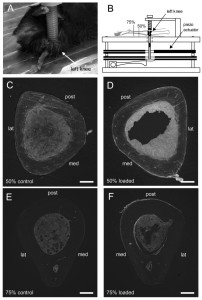Here’s a paper from Korea about a new longitudinal bone growth supplement that may be promising:
Effect of KH-BaRoKer-SeongJangTang based on traditional medicine theory on longitudinal bone growth
“KH-BaRoKer-SeongJangTang (KBS) is a recently developed formulation by using traditional drugs considering traditional medical theory of Oriental books such as ShinNongBonChoGyeong and JuRye, which has been used to improve the growth of child in Korea. Although KBS is usually prescribed to many children who are in retard for their age, its pharmacological effects have not been fully understood in experimental models. The aim of this study was to evaluate the effects of KBS on bone growth. Growth plate thickness and bone parameters such as bone volume/tissue volume (BV/TV), trabecular thickness (Tb.Th), trabecular number (Tb.N), connection density (Conn.D), and total porosity were analyzed by means of microcomputed tomography. Serum insulin-like growth factor-I (IGF-I) levels were measured by enzyme-linked immunosorbent assay. Hepatic IGF-I mRNA expression was analyzed by real-time polymerase chain reaction. Phosphorylation of signal transducer and activator of transcription5 (STAT5) was investigated using Western blot analysis and immunohistochemistry. The thickness of growth plate was increased by KBS. BV/TV, Tb.Th, TbN, Conn.D, and total porosity were improved by KBS. Hepatic IGF-I mRNA and serum IGF-I levels were elevated by KBS. Phosphorylation of STAT5 was increased with administration of KBS. These results suggest that KBS would be helpful to children who are in retard for their age through the elevation of IGF-I.”
Increase in Stat5 phosphorylation, increase in IGF-1, and increase in growth plate thickness could be indicative that the supplement could increase growth.
“Male ICR mice (4 weeks old) and diets were purchased from Dae-Han Experimental Animal Center (Eumsung, Republic of Korea), acclimated for 7 days, and then randomly assigned for 2 weeks to adequate protein (CON, 20% protein) or low protein diet (PEM, 4% protein) . The protein source used was casein. Except for the protein content, the two diets were identical and isocaloric. After 2 weeks, mice were divided into five groups, CON (adequate protein diet + distilled water (DW)-administered group); PEM (low protein diet + DW-administered group); KBS (low protein diet + KBSadministered group); Arg (low protein diet + Arg-administered group); Glu (low protein diet + Glu-administered group). The mice were fed indicated diet, administered each material three times a week for 12 weeks, housed four to six per cage in a laminar air-flow room, and maintained at a temperature of 22 ± 1℃, a relative humidity of 55 ± 1% throughout the study.”
So it seems that this supplement is an IGF-1 mimetic. Whether this can increase height in children with normal IGF-1 levels depends on the bodies negative feedback mechanisms.
“Binding of GH to GHR activates receptor-associated intracellular tyrosine protein kinase Janus kinase 2 (JAK2), which phosphorylates signal transducer and activator of transcription 5 (STAT5). The phosphorylated STAT proteins translocate to the nucleus, where they bind to specific DNA sequences and regulate gene transcription. Among the signal cascades from the GHR, the JAK2-STAT5 pathway is regarded as a major pathway that mediates the action of GH on gene transcription in the liver. This pathway was shown to be responsible for the transcriptional action of GH on IGF-I. IGF-I is a mitogenic factor for various cells and plays an important role in cell growth and survival, and the majority of plasma IGF-I is biosynthesized in the liver”
Two of the ingredients of the supplement are listed to be arginine and glutamine which aren’t exactly game changing. A detailed list of the ingredients are given in Table 2 of the paper(link provided).
The kbs growth plate and the general bone architecture does look a little bit better than the Arginine group.
“Effect of KBS on tibial growth plate thickness. (A) Representative 3D CT images of knee joint showing growth plate. (B) The thickness of excised bone growth plate was determined on five points. CON, adequate protein diet + DW-administered group; PEM, low protein diet + DW-administered group; KBS, low protein diet + KBS-administered group; Arg, low protein diet + Arg-administered group; Glu, low protein diet + Glu-administered group”
So the supplement didn’t have much more benefit over arginine.
“The lengths of proximal tibia growth plate in the CON and PEM groups were 112.82+/- 4.18 and 86.43+/-1.47, respectively. The growth plate lengths in the KBS, Arg, and Glu groups were 119.05+/- 6.48, 118.75+/- 4.81, and 87.82+/- 6.38, respectively. KBS and Arg significantly enhanced the longitudinal bone growth, whereas Glu did not”
Interestingly, the serum IGF-1 levels were lower than the contAnother major ingredient was a variation on the Hominis Placenta Extract. Given that the source is the human placenta which is very powerful, it is possible that this extract has of yet undocumented effects. And many species eat the placenta.rol group in the KBS group and lower than that in the Arginine group.
“Carthami Tinctorii Fructus increased the level of serum IGF-I and lengths of femur and tibia, however, its effect was very small and transient”
Something we can ascertain is that maybe excess IGF-1 levels don’t have that large of a benefit on height. As the excess IGF-1 levels of KBS versus arginine groups did not result in increased height.
KBS and Arginine increased growth plate thickness by about the same amount so it’s hard tell whether KBS has additional effects beyond arginine. The difference between KBS and Arginine growth plates are so small and the variance is so large that it’s hard to attribute the difference to anything other than normal variation.
It’s possible that KBS could increase longitudinal bone growth but whether that affect is greater than Arginine is unknown
Here’s the study on Carthami Tinctorii Fructus:
“Safflower (Carthamus tinctorius L.) seeds are used as a folk medicine to enhance bone formation or to prevent osteoporosis in Korea. Therefore, the methanolic extract of safflower seeds (MESS) containing high mineral content, such as calcium (Ca), potassium (K) and phosphorous (P), was evaluated for the role on osteoblast (Ob) markers of Sprague-Dawley rats. In serum of 3 to 11 weeks (wks) old rats, both osteocalcin (OC) content and bone-specific alkaline phosphatase (B-ALP) activity increased to their maximum levels in 4-7 wks. Hence, 3 wks old rats were selected for 8 wks oral treatment of MESS, resulted in the significant increase of Ob markers in serum such as OC content (4-8 wks), B-ALP activity (1-2 wks) and insulin-like growth factor I (IGF-I) level (1 wk), and the growth parameter such as the length of femur (2-8 wks) and tibia (4 wks). On the basis of Pearson’s correlation coefficient, there were a moderate correlation between OC and B-ALP at 8 wks, a low correlation between OC and IGF-I at 1, 4 and 8 wks, a moderate correlation between OC and femur length at 1, 2 and 8 wks, and a moderate correlations between OC and tibia length at 1 and 8 wks of MESS-treated groups. The result reveals that the changes of OC correlated at low to moderate level with the changes of B-ALP activity, IGF-I content and femur and tibia length in the MESS-treatment period. On the other hand, there were a strong correlation between IGF-I and femur length at 2 wks and moderate correlation between IGF-I and tibia length at 1, 2 and 8 wks of MESS-treated groups.”
“A Korean herbal formulation, Gami-Honghwain, is comprised of crude ingredients from safflower seeds and hominis placenta.”
“There are reports about chemical components of the safflower. Its leaves contain eight flavonoids, some of which showed potent antioxidant activities. Its seeds also contain numerous polyphenolic compounds such as lignans, glucosides, flavonoids and serotonins”
The increase in tibia and femur length ranged from 3-5%. Note though that a 3% increase of someone who’s 5’9″ brings them to 5’11”. And at all data points the treated group had longer bones than the control group.
“. In the aqueous extract from safflower seeds, there are K (2.306 μg/g), P (1.043 μg/g), Mg (0.474 μg/g), Al (0.175 μg/g), Fe (0.100 μg/g), Ca (0.075 μg/g), Zn (0.070 μg/g), Na (0.066 μg/g), Cu (0.055 μg/g) and Sr (0.022 μg/g). In the MESS, there are Ca (3.752 μg/g), K (1.313 μg/g), P (1.161 μg/g), Na (0.177 μg/g), Fe (0.170 μg/g), Zn (0.042 μg/g), Mg (0.023 μg/g), Al (0.019 μg/g), Cu (0.015 μg/g) and Sr (0.002 μg/g).”<-None of these seem to be novel compounds except for Strontium which is found in small amounts in normal human food. Since Strontium amounts are so small it would be possible to be deficient in it and extra dietary strontium may increase longitudinal bone growth.



